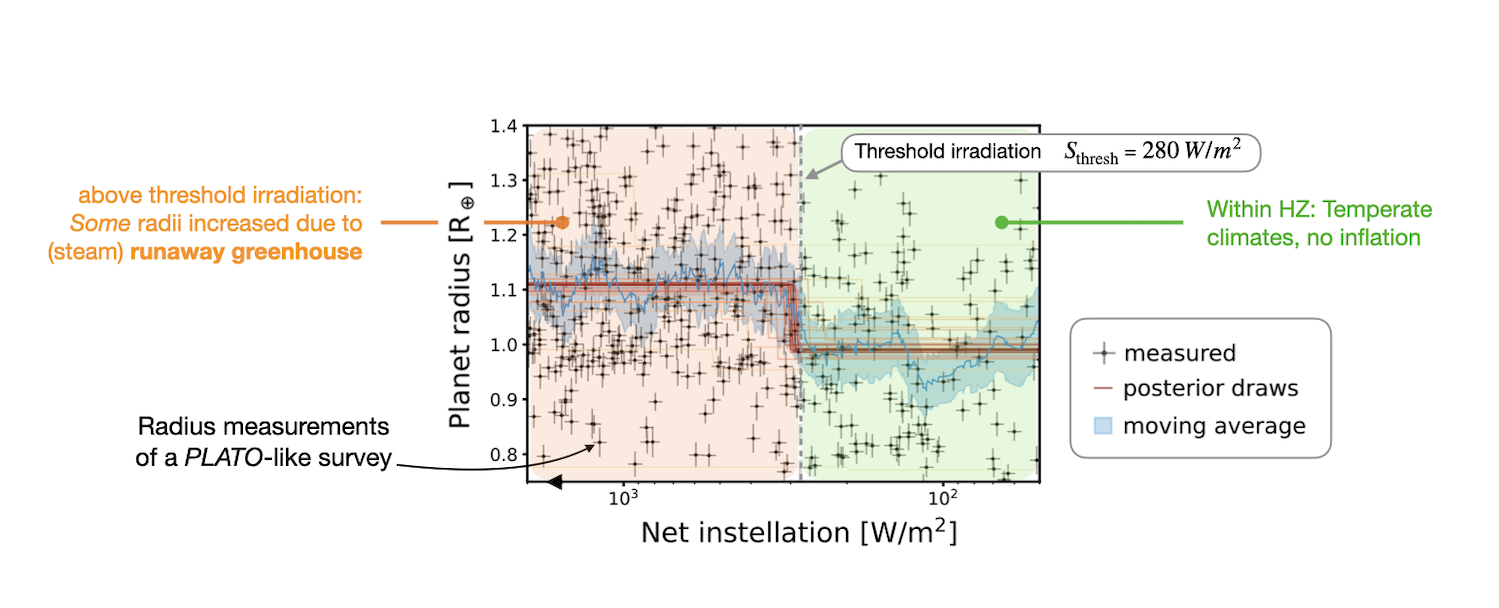Bioverse: Probing the Habitable Zone Inner Edge Discontinuity and the Origins of Life
- 1Steward Observatory and Department of Astronomy, The University of Arizona, Tucson, AZ 85721, USA
- 2Lunar and Planetary Laboratory, The University of Arizona, Tucson, AZ 85721, USA
- 3Kapteyn Astronomical Institute, University of Groningen, PO Box 800, 9700 AV Groningen, The Netherlands
- 4Department of Ecology and Evolutionary Biology, University of Arizona, Tucson, AZ, USA
- 5Observatoire de la Côte d’Azur, 96 Boulevard de l’Observatoire, F-06300 Nice, France
- 6University Observatory Munich, Ludwig Maximilian University, Scheinerstraße 1, 81679 Munich, Germany
Studying planetary habitability has become a major emerging research area, with critical implications for future exoplanet exploration and ambitious ground- and space-based telescopes. Efforts to design and optimize these missions have been focusing on maximizing the planet yield – the number of exoplanets a survey will be able to characterize – which is not necessarily equivalent to science return. We present Bioverse, a framework to quantify the diagnostic power of nextgeneration exoplanet surveys Bioverse allows to assess the detectability of population-level trends injected in simulated planet populations. Here, we apply Bioverse to explore the requirements for a mission to probe and characterize the inner edge of the habitable zone. We show that, through probing a discontinuity in the distribution of planetary radii and bulk densities caused by the runaway greenhouse transition, the PLATO mission will likely be able to constrain this demographic feature. This will constitute the first empirical test of the habitable zone concept.
We further use Bioverse to demonstrate how contextual information about a planet with a biosignature detection, such as its orbit or properties of its host star, lend or take away credibility from competing models of abiogenesis. We demonstrate that planet sample sizes ≥100 enable a strong test of a predicted correlation between past received nearultraviolet flux and the occurrence of biosignatures in the cyanosulfidic scenario for the origin of life.
Probabilistic assessments that take into account the population context will be critical for an effective search for extraterrestrial life in the Universe and to constrain the origin of life.

Figure 1. Detection of the Habitable Zone Inner Edge Discontinuity. We fit a population-level runaway greenhouse model (red posterior draws) to simulated radius measurements and test this hypothesis against the null hypothesis of an irradiation-independent distribution. In a large (N = 500) planet sample, the discontinuity is detected with high confidence.
References:
Bixel, A., & Apai, D. 2021, The Astronomical Journal, 161, 228, doi: 10.3847/1538-3881/abe042
Dorn, C., & Lichtenberg, T. 2021, ApJL, 922, L4, doi: 10.3847/2041-8213/ac33af
Ranjan, S., Wordsworth, R., & Sasselov, D. D. 2017, Astrobiology, 17, 687, doi: 10.1089/ast.2016.1596
Schlecker, M., Apai, D., Lichtenberg, T., et al., The Planetary Journal, in press. [arXiv:2309.04518]
Turbet, M., Bolmont, E., Chaverot, G., et al. 2021, Nature, 598, 276, doi: 10.1038/s41586-021-03873-w
How to cite: Schlecker, M., Apai, D., Lichtenberg, T., Bergsten, G., Salvador, A., Hardegree-Ullman, K., Affholder, A., Ranjan, S., Ferriere, R., Mazevet, S., and Heng, K.: Bioverse: Probing the Habitable Zone Inner Edge Discontinuity and the Origins of Life, Europlanet Science Congress 2024, Berlin, Germany, 8–13 Sep 2024, EPSC2024-1374, https://doi.org/10.5194/epsc2024-1374, 2024.